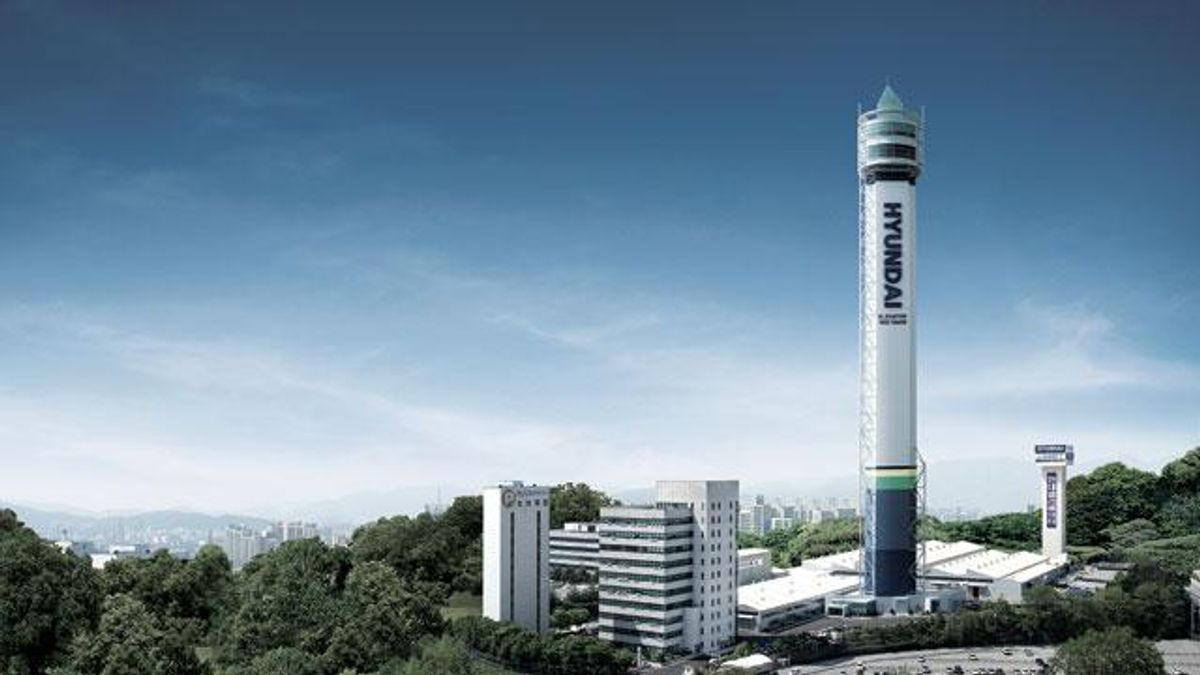This segment is part of the IEEE Spectrum series “Fastest on Earth.”
Fastest Elevator: Hyundai Elevator’s Test Tower
TRANSCRIPT:
Susan Hassler: Today’s architects can build towering skyscrapers that stretch more than 100 stories into the air. But traveling up to the top floors would mean a long and dull elevator ride, unless the buildings use cutting-edge, high-speed elevators. Eliza Strickland traveled to South Korea to visit a research facility where engineers say they’ve created the world’s fastest elevator.
Eliza Strickland: That music is all you hear when you ride Hyundai Elevator’s newest product. Yes, even the fanciest high-tech elevator must have elevator music.
Eliza Strickland: I’m in Hyundai’s test tower in Icheon, South Korea, riding in their ultrahigh-speed elevator. It’s capable of moving 60 feet per second, which translates to 3500 feet per minute—or about 40 miles an hour. That’s faster than any other elevator in the world. Yet the ride is smooth and quiet.
Eliza Strickland: Hyundai’s test tower is 800 feet high. But that’s still not tall enough for the elevator to reach its maximum operating speed. Young-Key Park, the company’s vice president, explains that the elevator is intended for the new generation of skyscrapers—buildings like the Burj Khalifa in Dubai, which measures more than 2700 feet tall. Park says Hyundai Elevator is currently talking to skyscraper developers about finding a home for its high-speed machine.
Young-Key Park: The building has to be nearing 150 stories high. However, we are working closely with construction companies to find opportunity in the near future.
Eliza Strickland: So how does Hyundai’s elevator reach its blistering speeds? It starts with an aerodynamic elevator shape, which minimizes air resistance as it slides up and down through the elevator shaft. Hyundai tested the elevator in wind tunnels to optimize the design. The elevator is also pressurized, like an airplane, so that the rapid changes in air pressure don’t cause passengers’ ears to pop. And a 15-ton synchronous electric motor powers the elevator, providing precise control over the elevator’s speed. But Park says that reaching high speed actually wasn’t the biggest challenge.
Young-Key Park: The main challenges in the ultrahigh-speed drive design is the safety and riding comfort of the passengers.
Eliza Strickland: To prevent vibrations, a sophisticated system uses accelerometers to measure each minuscule movement of the elevator car. Then the elevator’s guidance system pushes the car in the opposite direction to cancel out the movement and provide a smooth ride. The brakes are made of ceramic materials that can withstand the heat and friction generated when they latch onto the guidance rails. Hyundai Elevator presents all these high-tech features in its marketing video.
Video: With the development of ultrahigh-speed elevator technology, capable of reaching what many considered the “dream speed” of 1000 meters per minute, we are opening a new chapter in skyscraper competition.
Eliza Strickland: By achieving that dream speed of 1000 meters, or about 3300 feet per minute, Hyundai has surpassed the competition and positioned itself to take on the tallest building and the most towering challenges.
Video: Higher and faster, Hyundai Elevator is moving toward the future! Breaking the bonds of our planet! To enter the era of the elevators for the space age!
Eliza Strickland: The International Space Station may not need a 40-mile-an-hour elevator yet, but if it does, Hyundai Elevator will be ready. I’m Eliza Strickland.
[absurd musical climax]
Eliza Strickland is a senior editor at IEEE Spectrum, where she covers AI, biomedical engineering, and other topics. She holds a master’s degree in journalism from Columbia University.



